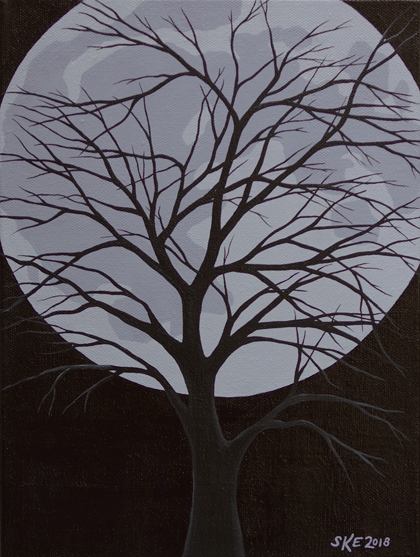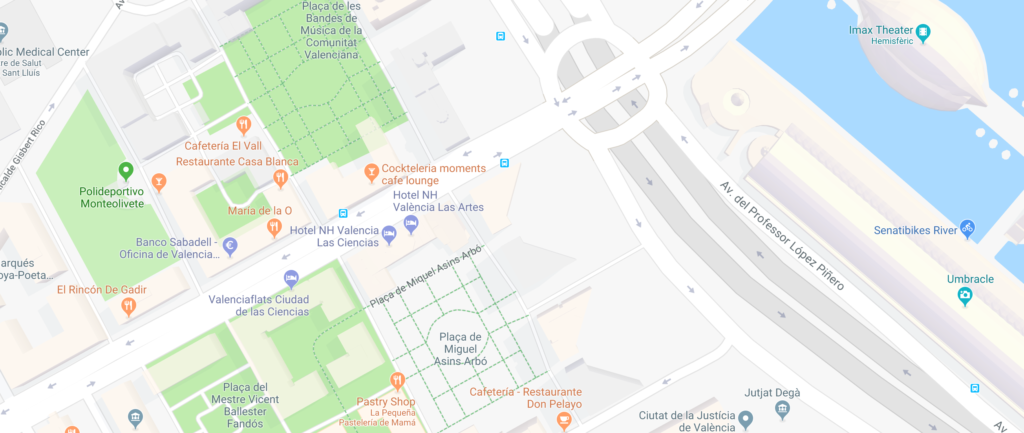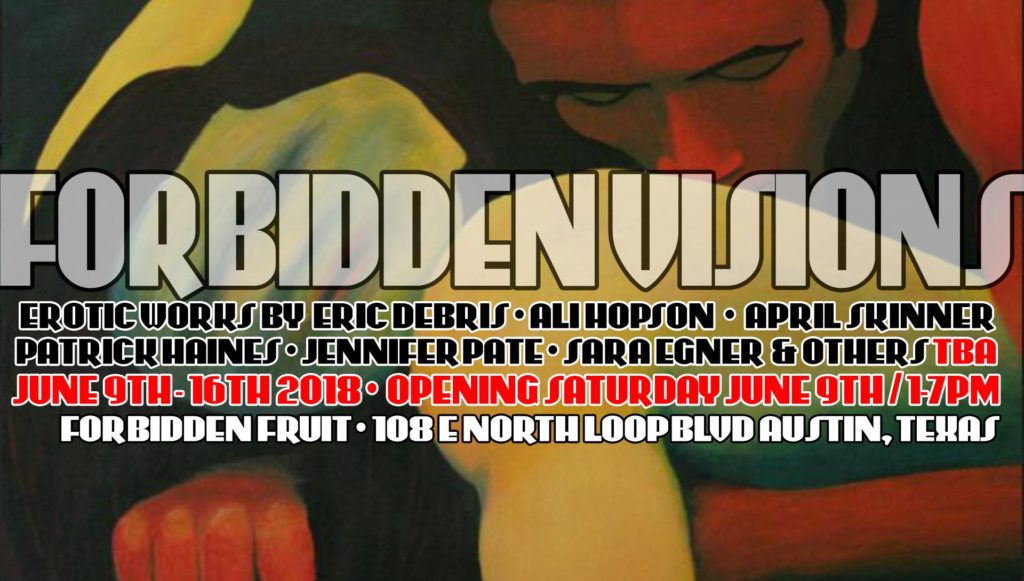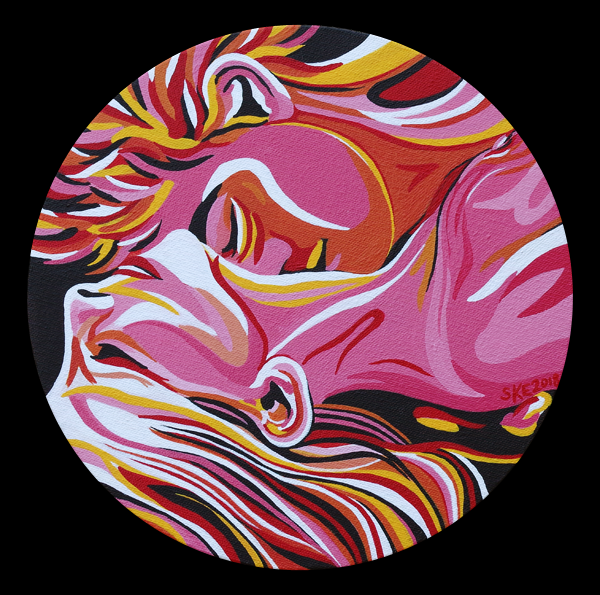Archive for the ‘Uncategorized’ Category
Molecule Rigging
Some of you reading are familiar with using the epmv plugin within Cinema 4D. Gary Welsh came up with a workflow for rigging those downloaded molecules to make them dynamic. I haven’t tried this one myself yet, but it looks really cool. I wanted the reference for myself, so I thought that I would share it with anyone else reading as well.
If you go to the YouTube page directly, you can even download the .c4d file directly.
Creative Cloud
Well I’ve finally jumped the bridge into having my own personal Creative Cloud subscription with Adobe. I’ve been giving it a lot of thought though, and this move to mandatory subscription based software really feels like a problem to me. If you are the type that keeps and updates their software at every upgrade, and right away, then you are exactly the type that is happy with the current model. It is actually cheaper than following every packaged upgrade was. But I also feel like they don’t put nearly as much into their upgrades as they used to now. They don’t have to impress anyone into buying the latest upgrade with their amazing new tools, so they just make a few tweaks here and there, and everyone has to futz with upgrading their machines and try to maintain compatibility with each other on collaborative projects.
And really, compatibility on collaborative projects is the #1 reason for me finally paying into Creative Cloud services. The last new features that really impressed me in flat image manipulation were Photoshop’s Content Aware fill and Puppet Warp tool, both of which came prior to Creative Cloud. The video updates on the other hand, have been more substantial. That has a lot to do with Premiere and After Effects’ abilities to work with codecs that didn’t even exist prior to Creative Cloud. Also, Premiere has this thing these days where it just recognizes what you’ve put in a timeline and asks if you’d like everything to match that. And come on, that’s just really nice. But ultimately, I can still do most of the things that I want to do with my old CS5 software. I just can’t work with a file that someone sends me that was made in Creative Cloud. I also can’t open my own files, that I have made in Creative Cloud when I’ve had it supplied through my work. And that brings me to one of my bigger concerns with Creative Cloud.
I find myself hesitant, even now that I’m paying Adobe all of this money to have access to the Creative Cloud, to use the new shiny software, because it makes my work feel less my own. I know that if I start a project, I’m only able to get back into it again as long as I continue to pay Adobe for access to Creative Cloud. If I want to know I can open something later, sometimes I still open things up with my old CS5, because I don’t know if it will always be worth it to keep paying Adobe for their cloud services. They do have these really nice tools, but it’s also a trap.
Back when I was working odd jobs here and there, I relied heavily on my old software bought under school discounts. And occasionally you’d land a job that would come with some new software or an upgrade as part of your compensation. That was when you upgraded. But there was never a continued monetary commitment to hold on to that software. You just had it now. And you could always count on being able to get back in to those old projects. And if a job wanted you to have better, they either bought it for you, or you decided if you could buy it for yourself. And if a really impressive upgrade came along, maybe you saved up for a bit and upgraded to get it. Now, I don’t know what new artists are doing. I suppose that the ones with family funding have the subscriptions, and the ones without it either sink into debt quickly or just can’t access the tools to do the work. And I guess that’s always been the case to an extent. This has always been expensive software. But there used to be real ins to having it and having the opportunity to practice with it, that weren’t then stripped away, or worse still, charge you fines to break contract and stop paying them (sometimes jobs go bad), or auto fine you if you miss canceling the subscription at the right time.
Sometimes I wonder, if I use these tools my whole life, how much will Adobe make off of me when I die? How much have they already made on deceased or hospitalized artists? Calling Adobe isn’t exactly a first priority when a loved one dies, or goes into the ICU. I had a great aunt who passed away a long time ago, and I remember that when my father was trying to help out with her affairs, he found that AAA had been auto updating her account and charging her. She didn’t drive for probably her last decade if not longer, but AAA was getting their cut the whole time.
The Adobe products themselves are still really powerful, and I don’t mean to suggest that the company shouldn’t turn a profit on them. But I’m just not comfortable with the current model. I hope that it is someday reformed. If it isn’t, I believe that Adobe will come to find more competition as many artists begin investing in tools that better serve their needs. But for the meantime, they are still the industry standard. And what that ultimately means is that life for digital artists comes with this extra expense that you don’t see in most professions and that isn’t necessarily paid back in added income. And that’s just the way it is right now. My fear is that more professions will look like this as more companies find ways to get people into subscription contracts for their basic tools. But my hope is that competition will drive the market to create better options for artists over time.
Tree #11
I finally finished the new tree painting. This one has been a bit of a wish for fall as we get through the final slog of all this over 100º weather.
Making Coils in Illustrator
Lately I’ve had some work come up that has required illustrating coils using Illustrator. This is one of those things that has just always been a pain when it comes up. So finally I took the time to work out a real strategy, rather than just fumble through it like I usually do. Looking online for advice, I found that a lot of people struggle with this, so I’m going to share what I did with all of you as well.
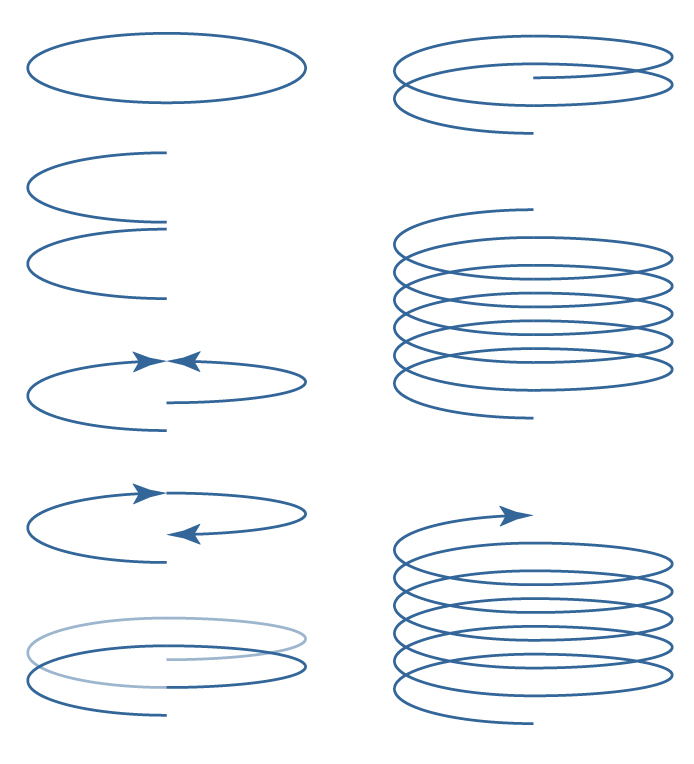
• Make an oval. For my example I went with 200 x 50.
• Delete one of the side points, so that you have half an oval.
• Duplicate the half and reflect it or rotate it to the other side.
• Make one of your sides shorter (in my case, Side A remained 100 x 50, while Side B was shortened to 100 x 30). Keep both sides the same width for an even coil.
• If direction is important, you can fuss with reflecting horizontally to keep your line going in the same direction (significant if you’re using gradient lines or arrowheads)
• Duplicate that and keep lining up the ends however far you want your coil to go.
• And if you want to make the whole thing one solid line, go to Object > Path > Join. Voila, now you have one even looking coiled line that you can put a single arrowhead on if you’d like, or cut wherever you’d like to add more arrowheads, or use gradient effects with, or warp as your project’s needs may dictate.
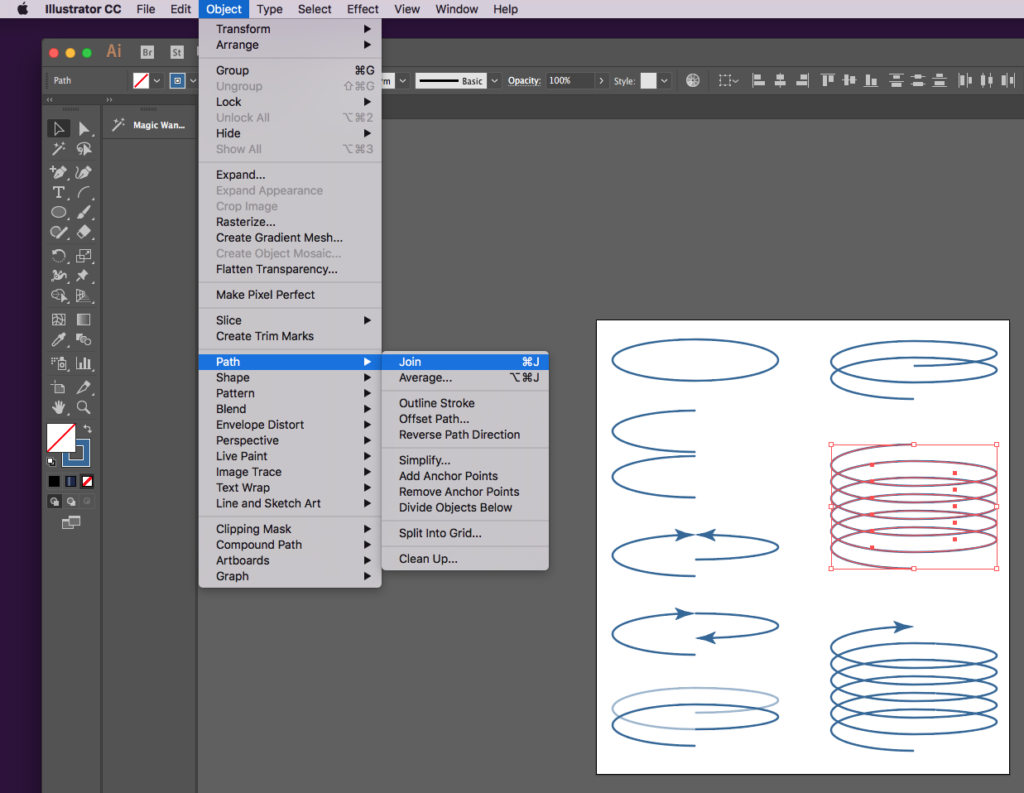
It’s one of those things that seems obvious once you do it. But until you do, or until you see it somewhere, it’s easy to lose a lot of time shaking your fist at the lacking zig zag effect which just won’t give you what you want, or messing around with the spiral tool or arc tool. Enjoy!
The Moon’s Formation
Today I finally got the go ahead to share one of the astronomy animations of late. It looks like we may change something about the sun on the first one, but this one is staying as is. This was definitely the crazier of the two to work on so far. I don’t really ever get requests to crash things when I’m making bio animations. So I did a few tests in advance of taking this one on, where I discovered the Voroni Fracture, which is super fun, especially when combined with the push-apart and random effectors. Unfortunately, by the time we got the textures fully set and introduced a molten core, every scene that used Voroni fractures wound up taking forever to render. There are spots where I would have liked to do it a few more times to finesse some of that stray space debris and get it just so. But overall, I learned a lot working on this, and it was fun to try something different.
It’s been a while since I’ve been able to post anything fun from work on YouTube. For a while there, most of my animation work was either going into larger interactives and needed that context to make sense, or was really small, and again best within the context it was being made for.
I’m looking forward to doing more of these. And when we get things settled with that first one I’d like to show it off too. It’s less smash and more elegant. I think it’ll give viewers a good aha moment, and well, that’s my favorite part of working on things like this. Well, that and the part where the details of my job involve all kinds of cool scientific knowledge. Really, prior to making this, I don’t believe I’d ever heard this explanation for how our moon formed.
Oh, and I can’t forget to mention this awesome find for textures. I only used them a little in this animation, but I’ve gotten good use out of the textures that are freely available from Solar System Scope. It’s a lot like taking them directly from NASA, only these folks have already done the work of taking NASA’s telescope images and stitching them together to make a perfect texture for application to a sphere in whatever 3D program you might be using. It’s really made working on these kinds of images nice. So big thanks to them, and obviously to NASA.
Valencia
I recently had the opportunity to travel in Spain. I loved everywhere that I went, but I have to say that I was utterly charmed by Valencia. The old town was beautiful, the paella delicious, but in retrospect I realized that it’s emphasis on both the arts and the sciences was really awesome. And the proximity with which those categories were kept was refreshing. My first pass through the city didn’t offer enough time to really explore much beyond the old part of town, but on my way back through later I decided to check out the Museo de las Ciencias. The buildings over there were just too cool not to take a closer look.
I’ll admit, the architecture does overshadow the exhibits inside, but I really did enjoy walking around and seeing their displays. They had things about dinosaurs, about Mars (I had to text a friend from JPL when I saw their Mars Rover display), a tesla coil, and a surprising smattering of health and anatomy related stations. There were displays about cancer, and genetics, and muscle strength, and even dying. It felt like a really different representation of these things than I can recall ever seeing in The US. I found myself wondering if matters of health and medical treatments are perhaps more ingrained in the public consciousness over there. There was even a little display where you looked through a mock surgical door window to see surgical videos. It was interesting.
Someday I hope to make it back and check out the Oceanographic aquarium and maybe even catch an Imax viewing at the Hemispheric. Really though, all of those buildings were just such beautiful architectural masterpieces, that it was lovely just walking around as well.
I did have a little confusion that made me laugh about there being two NH hotels right next to each other when I first got in. Turned out that one was the Hotel NH Valencia Las Ciencias and the other was the Hotel NH Valencia Las Artes. Anyone who reads here with any regularity knows that I would have combined those offerings, but I did enjoy that they were literally right next door to one another. I asked what the difference was, and I was told that the science section was a 4-star hotel whereas the art section was a 3-star section. I guess there’s some commentary in that about the expectation for artists to be well-paid.
Overall though, I was very taken with the level of artistic detail in so many spaces, alongside the emphasis on science, and then add to that all the history that just comes naturally with European cities and their buildings which date back so very long ago and constantly keep that sense of history alive in modern day-to-day life. A lot of that blend was just the way Spain is in general, but I think that the University of Valencia was maybe pushing that rich content blend just that much further. All in all, it was a beautiful place to spend a little time.
Upcoming Show
Austin locals, please do come check out the works that are going up at Forbidden Fruit this weekend.
With
The Young Artist and the Critic
Nephron Anatomy
I recently had an assignment to create a nephron illustration. I’ve illustrated nephrons before, and I even thought I’d be able to re-use some of my old work. But it turns out, all of my previous work with nephrons was at a more introductory level. I have to say, I was downright disappointed. Because science gets complicated, and anatomy in particular, there are a lot of times when models are simplified for clarity, but it really bothers me when I feel like students are actively mislead.
The first time I ever illustrated a nephron was in grad school. I did it for my pen and ink assignment, and was really happy with how it turned out.

Then not long after I started with Sapling Learning, I wound up illustrating a nephron in Photoshop.

We even used arrows with this one at one point to show flow. And I looked at a lot of images throughout making both of these images. But not until a more advanced illustration request came up, did I ever realize that the distal tube of the nephron always passes by the opening of the capsule between the efferent and afferent arterioles. There’s actually an important feedback process that happens there where the contents of the tubule affect dilation and therefore the rate of filtration happening.
If you look up the juxtaglomerular apparatus you can find a lot of references at this level. That one detail of form is an important part of how nephrons work. So it bothers me that it’s so widely agreed not to feature it in more introductory images. They do that for clarity, but I think it’s too important and really I’m not sure that it actually adds all that much more complexity. So this is my most recent nephron artwork. It’s not my prettiest version, but it does tell more of the story. If we’d had more time, we probably would have done more with the form of the podocytes. They really weren’t the point of the illustration though, so we settled for at least giving them a nod. This was more about showing the layout of the cells between where the distal tubule passes between those in and outgoing arterioles to allow for the signal exchange about how much filtration is needed and for flow to be appropriately affected via dilation.
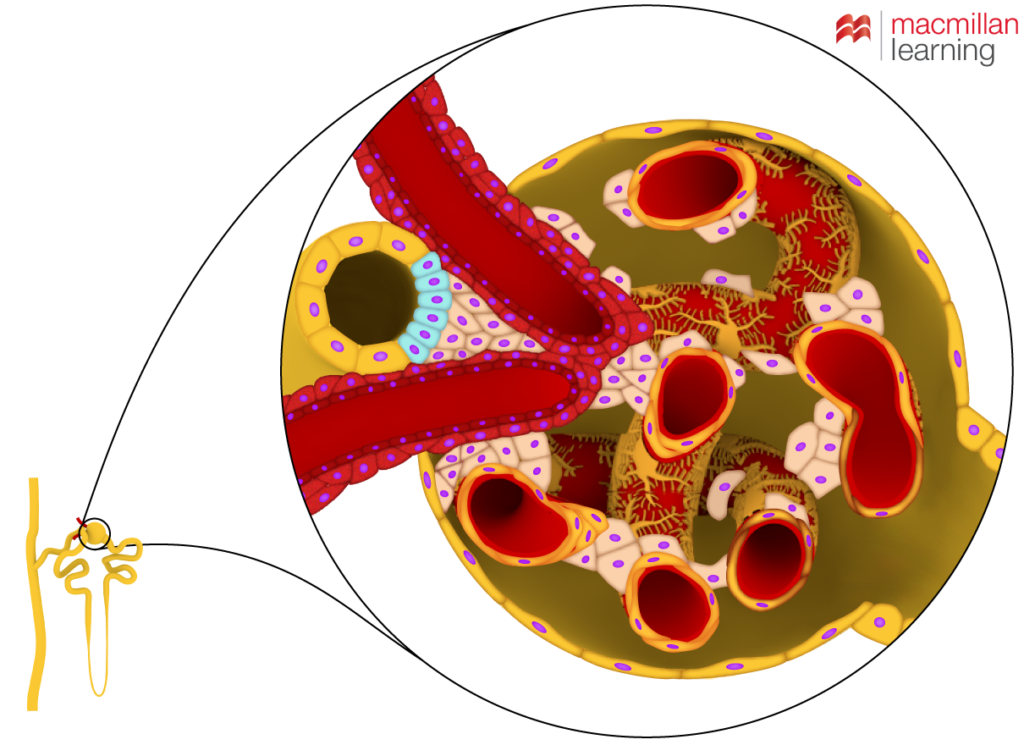
So now I’m hoping that moving forward, I can always use that simple design change in representing nephrons so that when students get to this part, it’s not so jarring. Maybe a lot of students don’t get stuck on details like that, but I know that I always have, and I know that I’m not the only one.
